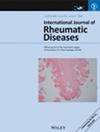Psychometric Properties of the Chinese Version of the Arthritis Self-Care Behaviors Scale
Abstract
Background
In Chinese intervention studies, the lack of specific self-care scales based on the functional characteristics of Rheumatoid arthritis (RA) patients has caused patients and researchers to spend a great deal of time completing multiple related scales during the research work. Therefore, the arthritis Self-Care Behaviors Scale (SCBS) was developed to evaluate the self-care behavior of patients with arthritis.
Objective
The objectives of this study were to translate the SCBS into Chinese and test its psychometric properties in Chinese patients with RA.
Methods
The SCBS (English version) was translated to Chinese using Brislin's forward and backward translation method. A total of 414 adults with RA completed the Chinese version of the SCBS. Item analysis, content validity, construct validity, internal consistency reliability, and test–retest reliability were used to test its psychometric properties.
Results
Item analysis showed that the SCBS (Chinese version) has good discrimination and consistency. The Cronbach's alpha coefficient was 0.873 of the content validity index (CVI). Exploratory factor analysis demonstrated a five-factor solution, which is different from the traditional one. The results of the five common factor models indicated that the revised Chinese version of SCBS had good construct validity. The test–retest coefficient was 0.82, supporting adequate reliability.
Conclusion
The Chinese version of the SCBS is a reliable and valid instrument to evaluate RA patients' self-care behavior in China. However, further research into different economic levels, education levels, and age groups would broaden the scope of the Chinese version of the SCBS.

 求助内容:
求助内容: 应助结果提醒方式:
应助结果提醒方式:


